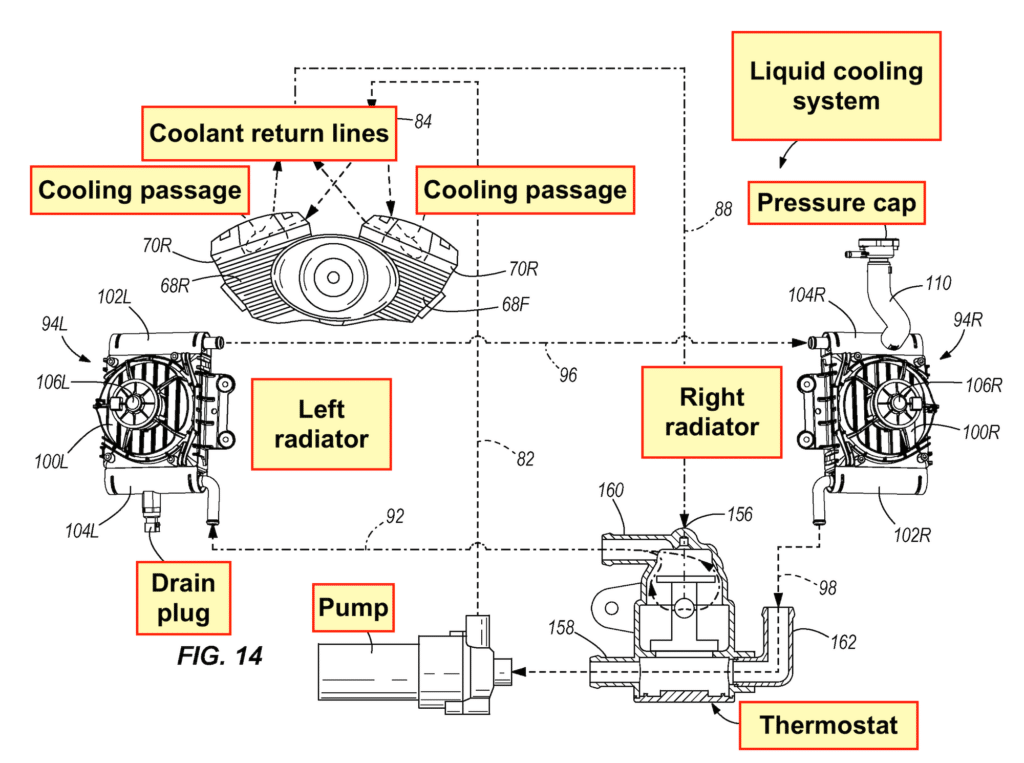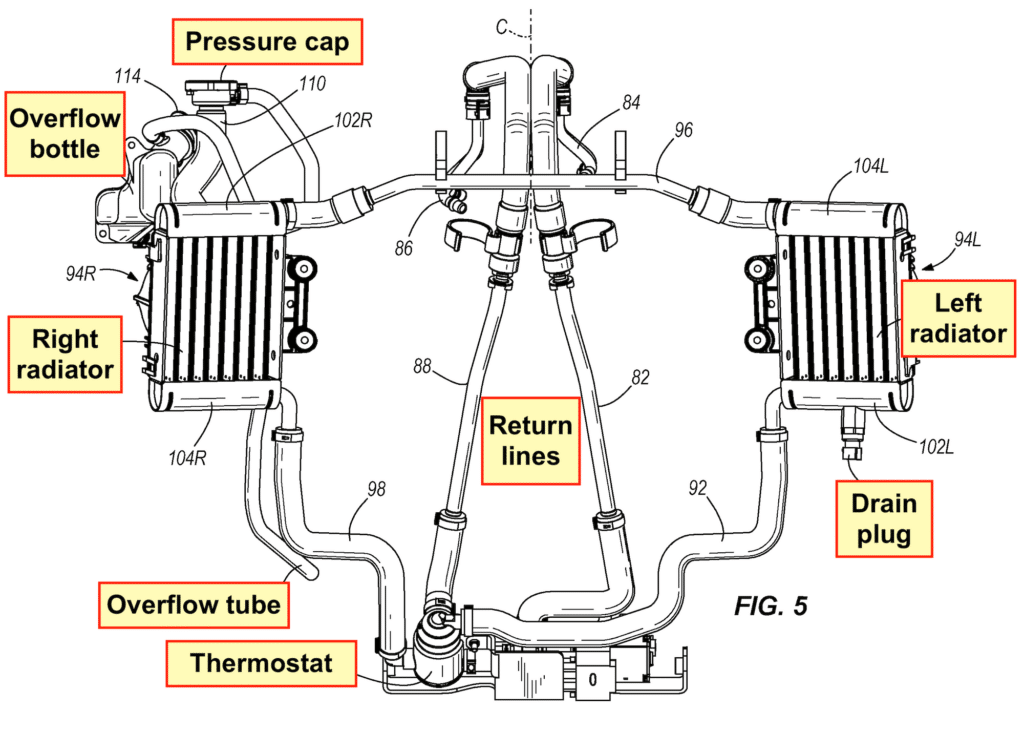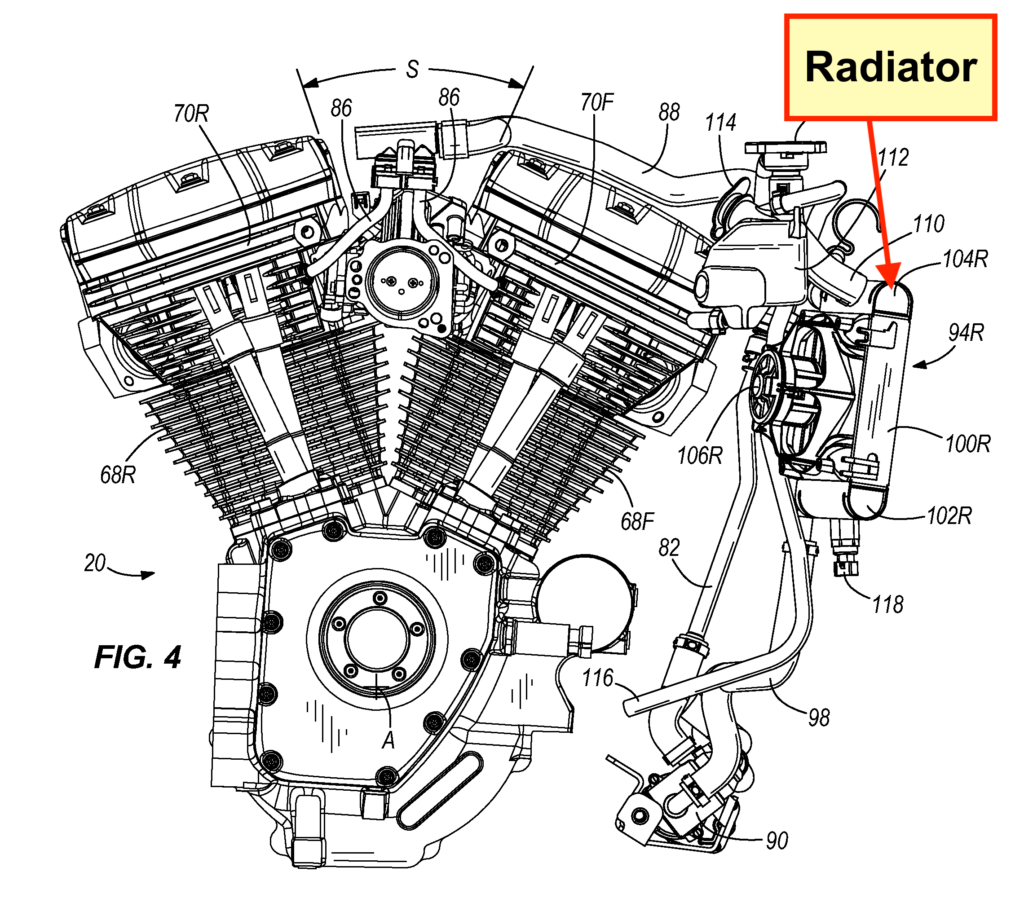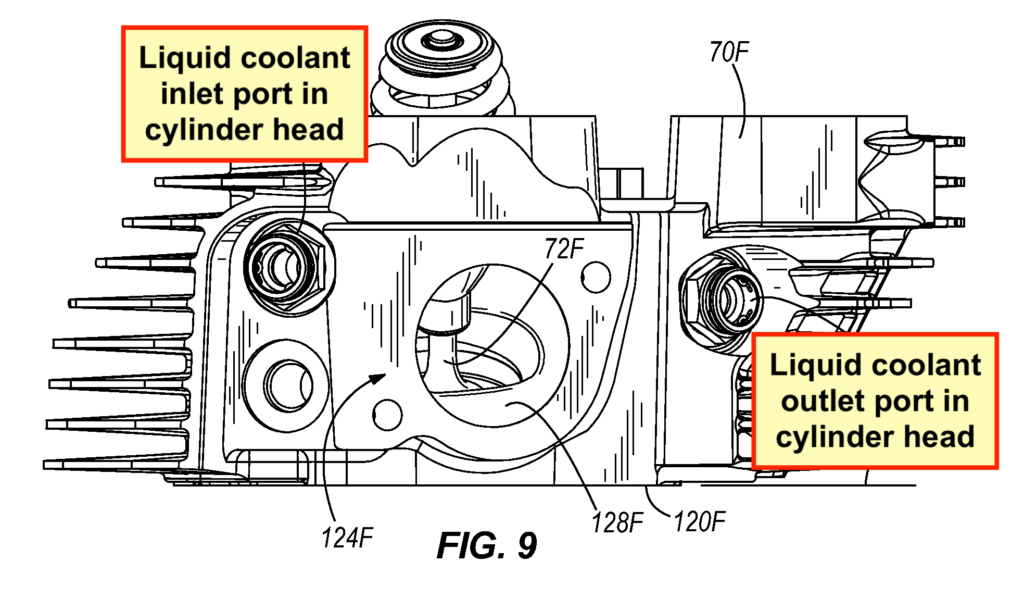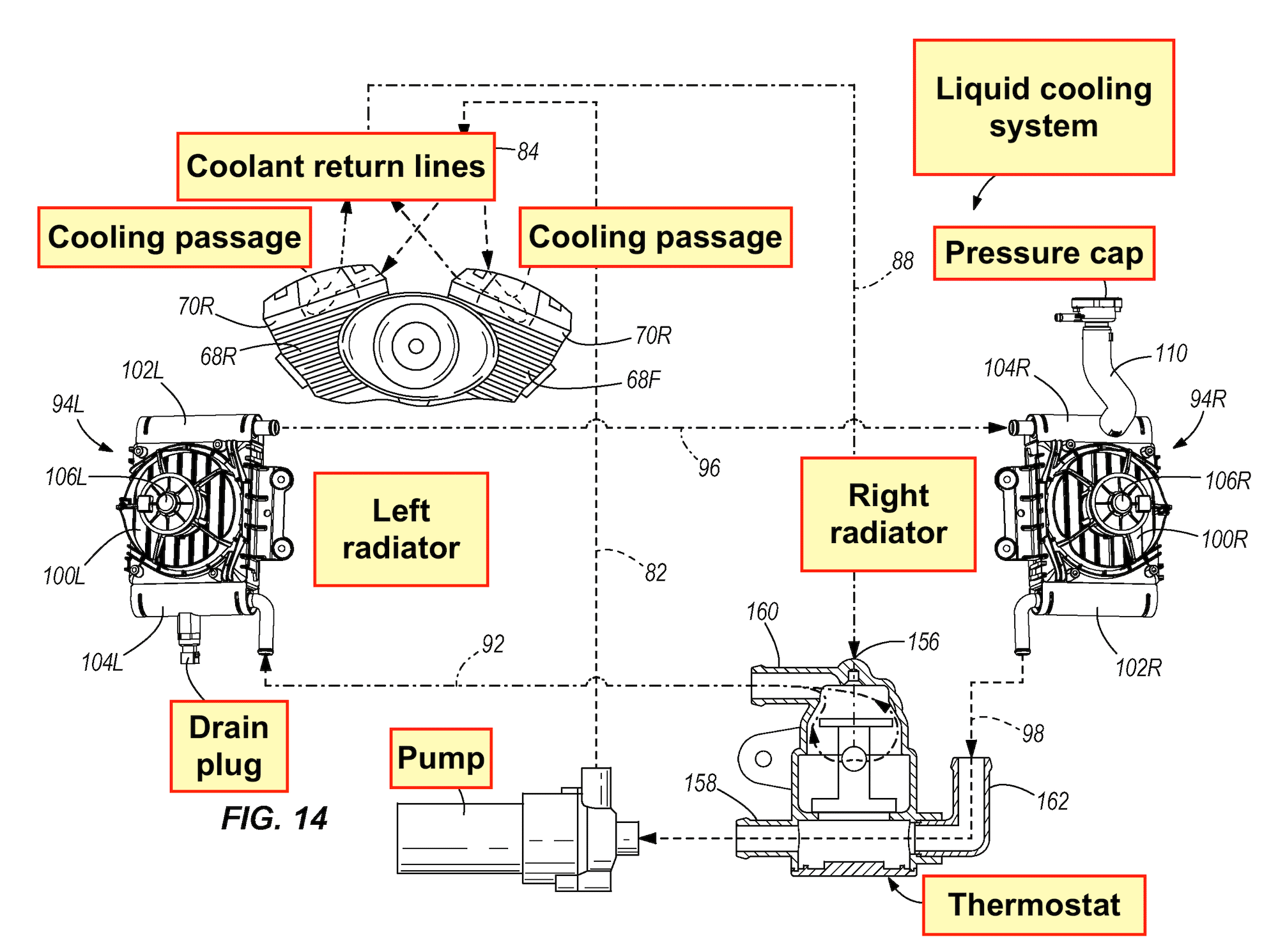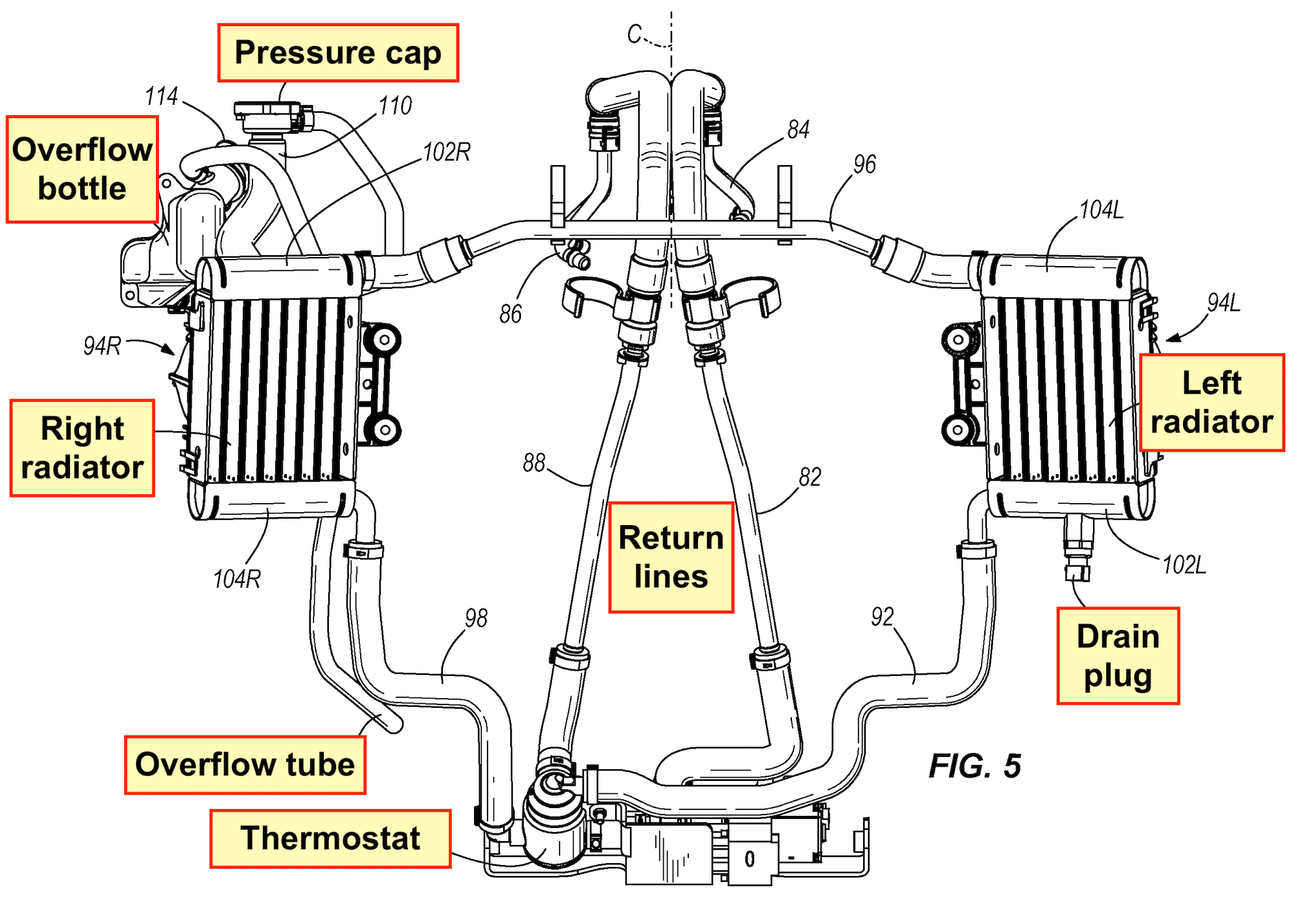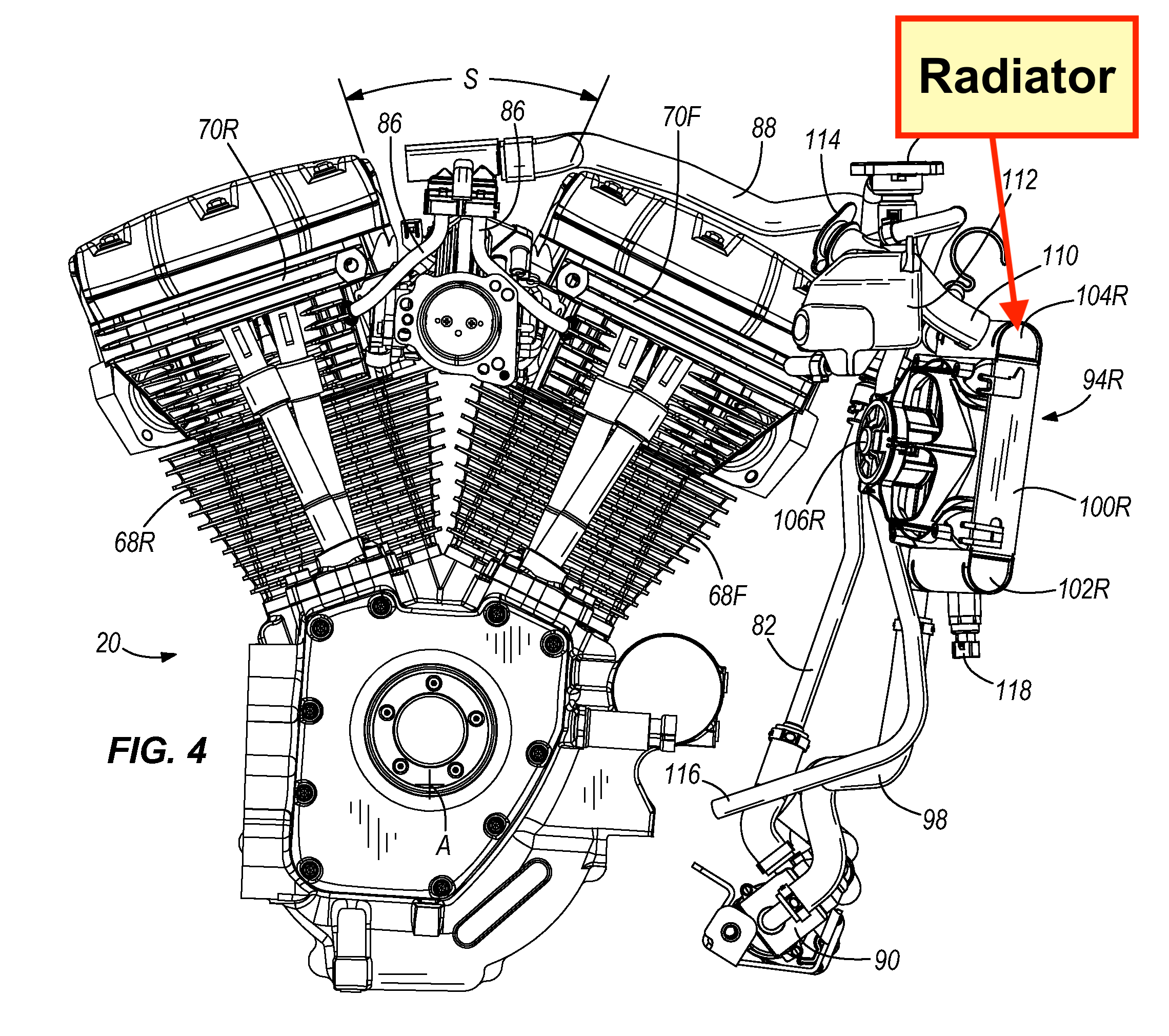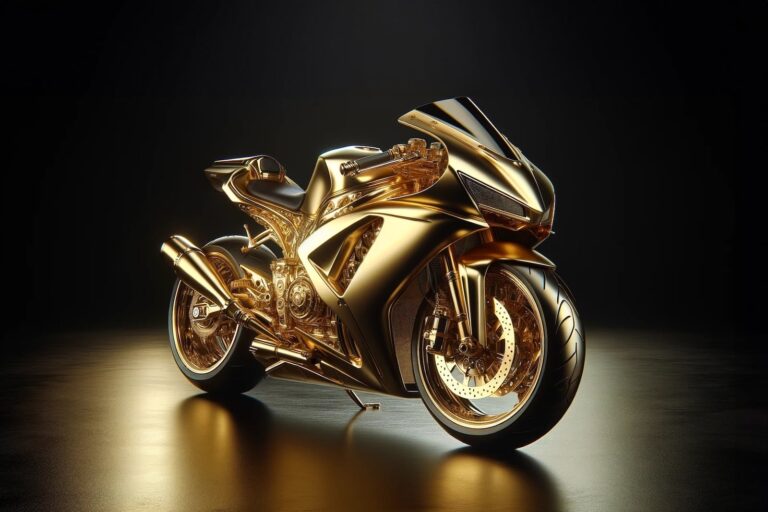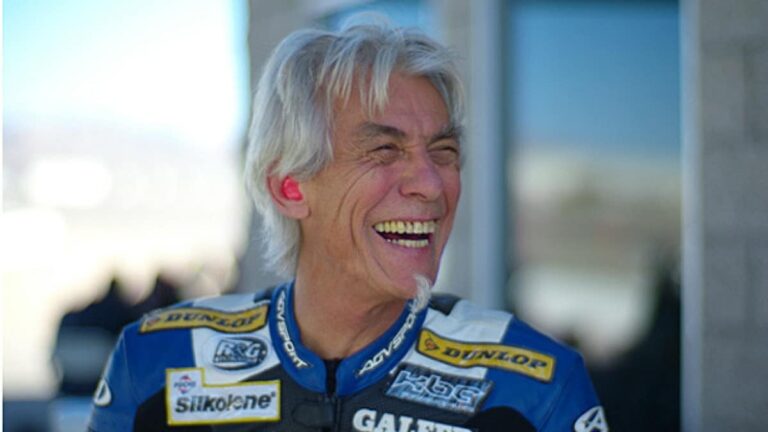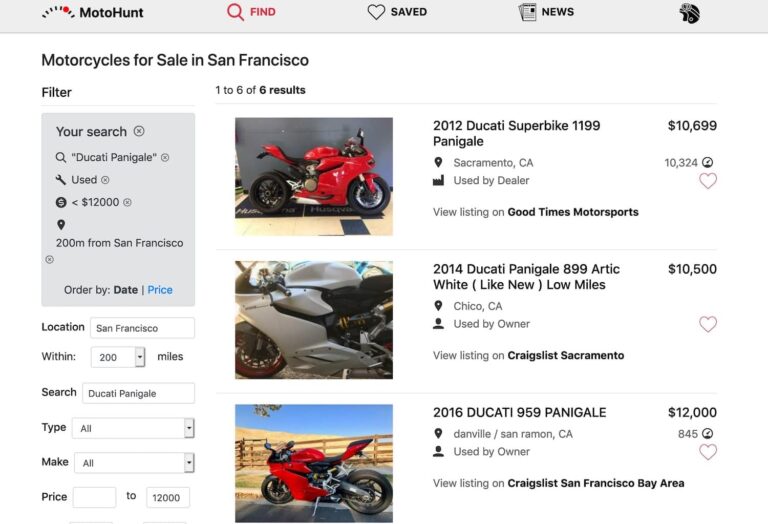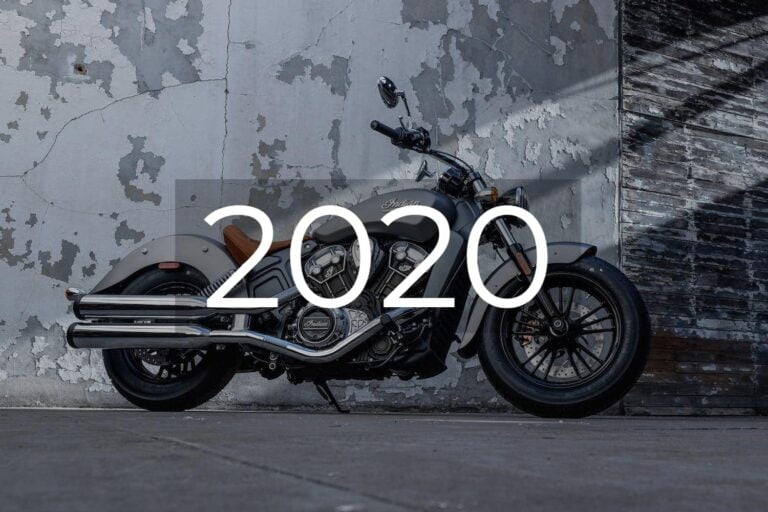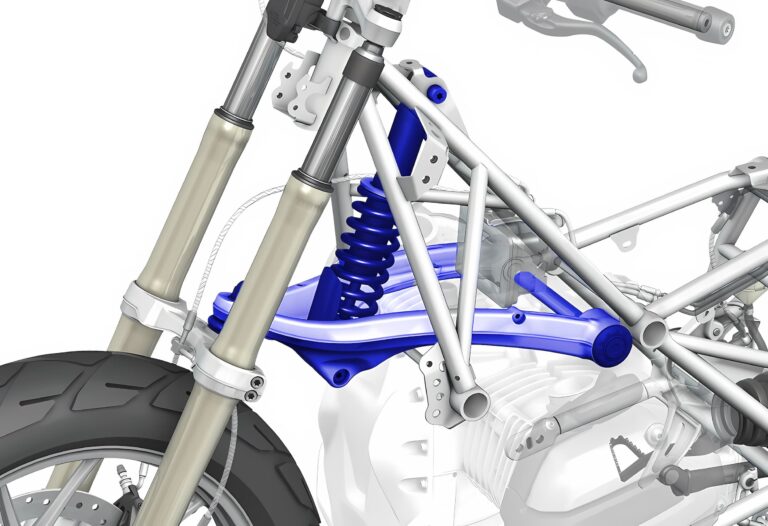We think of Harley-Davidson “Big Twin” motorcycles as being air-cooled, or at least air/oil-cooled, where there are additional oil channels for cooling, and an oil radiator at the front.
But it seems like H-D is sneaking up on liquid cooling via its “twin-cooled” big twins, and below is an exploration of how (and why).
Of course, Harley makes other bikes that are explicitly liquid-cooled. These are bikes like the V-Rod line (here’s that model guide), the RH motorcycles (like the Sportster S and Pan America), and Harley-Davidson’s smaller bikes, like the Street 500/Street 750 and the entry-level single-cylinder X350/X500 models built by Qianjiang Motor in China. We’re not talking about those — we’re focusing on the Big Twins that Harley-Davidson is most known for.
Now, liquid cooling has been creeping into the Harley-Davidson Big Twin motorcycles, too. Harley-Davidson started off calling it “Twin Cooling”, as a way of reminding us they’re still air-cooled. But gradually, that language faded away. What I’m surprised by is how few people are talking about this, so I wanted to make an article about this trend.
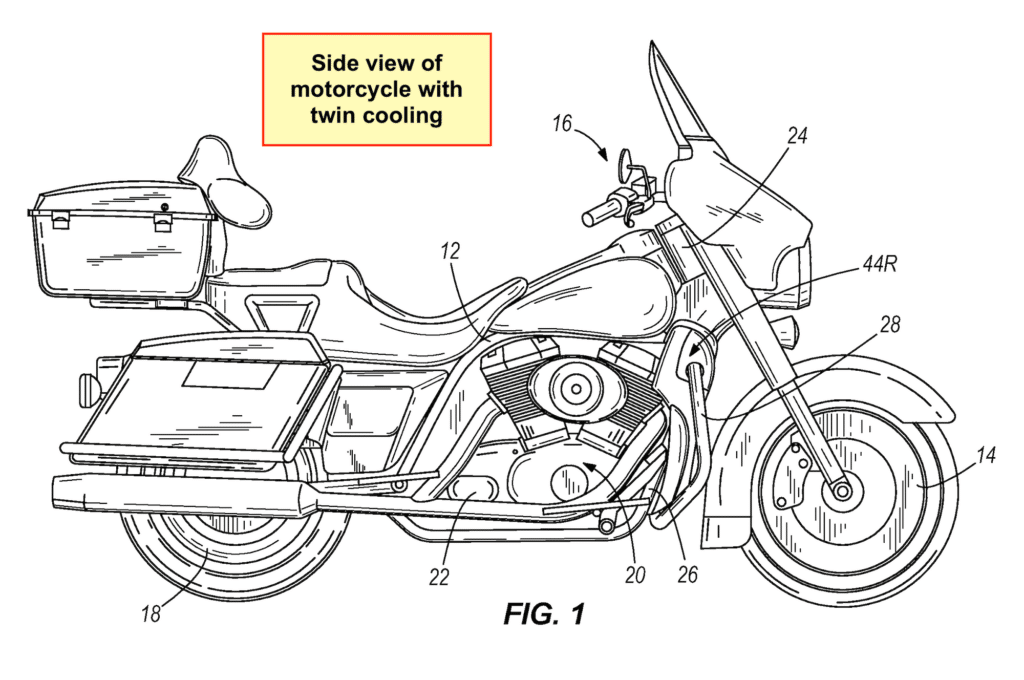
You might also like this article comparing the pros and cons of air-cooled bikes vs liquid-cooled ones.
Are you obsessed with motorcycles?
Well, I am. That’s why I created this site — as an outlet. I love learning and sharing what others might find useful. If you like what you read here, and you’re a fraction as obsessed as I am, you might like to know when I’ve published more. (Check the latest for an idea of what you’ll see.)
Design of Harley-Davidson “Twin Cooling” System
Harley-Davidson first patented a design for twin cooling in 2009. (Google Patents).
The goal of the twin cooling system is, like with many liquid cooling designs, to ensure compliance with emissions regulations, improve rider comfort, increase engine performance and efficiency, and extend the life of the engine.
Of course, cooling systems come at a compromise of introducing complexity. But to many, it’s worth it — if not inevitable. (See more about air/oil-cooling vs liquid cooling here.)
The patent is quite in-depth, showing passage for coolant to enter and exit the cylinder head, the radiator, the fan, and so on. It’s explicitly mentioned in the abstract that the purpose of the cooling system is to reduce the temperature in the cylinder head.
You can see quite a bit of detail in the design. See the images below.
Here’s how the patent describes the cooling system.
The patent describes the cooling system as “Hybrid Cooling“. The Twin Cooling system employs a hybrid approach by integrating liquid cooling for the cylinder heads while maintaining the classic air-cooled engine aesthetic.
Liquid cooling is applied directly to the areas around the exhaust valves and the combustion chamber where temperatures are highest. The goal is to reduce thermal stress and improve longevity without compromising the look and sound of Harley-Davidson air-cooled engines.
To keep the Harley-Davidson air-cooled aesthetic, the Twin Cooling system hides a heat exchanger and pump in the motorcycle’s design. They hide the radiators in the sides — a much less obvious placement than on the new Sportster or Nightster models, for example. The placement of the liquid cooling systems in the Twin-Cooled engines highlights the importance that Harley-Davidson places on the classic design ethos of the big twins.
The First Harley-Davidson Twin-Cooled Motorcycles

Harley-Davidson first started using “Twin Cooling” in the Big Twin line with the 2014 Harley-Davidson Ultra Limited, the CVO Limited, and the Tri Glide Extra.
These motorcycles used a “High Output Twin-Cooled Twin Cam 103” engine. The Twin Cam was the generation of motors before the Milwaukee-Eight.
The following year, Harley-Davidson brough tthe “High Output” engine modifications to the air-cooled Twin Cams. We can see the spec comparison below.
| Engine | Twin Cam 103 | Twin-Cooled Twin Cam 103 | High-Output (Air-Cooled) Twin Cam 103 |
|---|---|---|---|
| Compression ratio | 9.6:1 | 10.0:1 | 9.7:1 |
| Peak torque | 100 lb-ft (135 Nm) @ 3250 rpm | 105.5 lb-ft (143 Nm) @ 3750 rpm | 104.7 lb-ft (142 Nm) @ 3250 rpm |
Interestingly, the Twin-Cooled Twin Cam 103 seems to peak in torque significantly higher than the other engines.
The CVO Touring motorcycles got a higher-capacity 110 cc Twin-Cooled Twim Cam 110 engine. Again, this performed higher than the air-cooled Twin Cam, as well as slightly more than the High-Output Twin Cam 110.
| Engine | Twin Cam 110 | Twin-Cooled Twin Cam 110 | High-Output (Air-Cooled) Twin Cam 110 |
|---|---|---|---|
| Compression ratio | 9:2:1 | 9.2:1 | 9.2:1 |
| Peak torque | 109 lb-ft / 136 Nm @ 3000 rpm (’16 Softail Slim) | 115.1 lb-ft (156 Nm) @ 3750 rpm (’16 CVO Road/Street Glide) | 115 lb-ft /156 Nm @ 3500 rpm (’16 Low Rider S) |
The specs of each engine varies with the motorcycle they’re in — some of the bikes come with performance parts like intakes and exhausts as standard. But generally, the pattern is roughly the same — the “Twin Cooled” big twin engines makes similar power to the high-output or “Screamin’ Eagle” variants of the air-cooled engines.
The Ultra, CVO, and Tri Glide range are premium motorcycles. They’re designed to be refined (say that out loud!). Part of this “refinement designment” means a more comfortable ride, and one aspect of more comfort is not having hot air blow all over you.
Harley-Davidson developed the partially liquid-cooled Twin Cam engine as part of Project Rushmore, which spun out other developments like ABS on V-Rods, higher-capacity Twin Cam motors for some cruisers, and hydraulic clutches on touring models.
Twin Cooling in the Twin Cam motor means “precision” liquid cooling. Harley-Davidson used liquid cooling only in the cylinder heads — keeping the cylinders air-cooled, their mighty fins continuing to provide a function.
The cooling system focused on the rear cylinder (which suffers from poor airflow, thus needs coolant more), and then explicitly on the exhaust ports, which get the hottest. The cooling system also includes an electric coolant pump, two radiators (one in each fairing lower), and fans.
The sum effect of the Twin Cooling system in the Twin Cam 103 motor is slightly more compression and power, and a lower operating temp, which should translate to more reliability.
Of course, the question most old-school riders would ask is “But what if the cooling system fails?” Well, the manual explicitly states that you should not ride it if the cooling system has failed.
But many riders report riding their Twin-Cooled motorcycles with failed pumps — albeit at moderate loads, and for short distances sometimes — with no coolant. I wouldn’t ever recommend it on paper, but others have done it (see here on hdforums.com).
After the Ultra and the Trike, Harley-Davidson started broadening out the Twin-Cooled Twin Cam to other high-end motorcycles.
In 2015, the CVO Touring range (the Limited, Road Glide, and Street Glide) all got the Twin-Cooled High-Output Twin Cam engine. The CVO Touring bikes also kept the Twin-Cooled motor in 2016.
From 2017, the Touring line all got the Milwaukee-Eight motor, which was a new motor for Harley Davidson.
The Milwaukee-Eight Liquid-Cooled Era

In the Milwaukee Eight era (2017-onward), Harley-Davidson kept Twin Cooling in the above models — the Ultra and the CVO Touring motorcycles, including the Road Glide Ultra, Tri Glide Ultra, the CVO Street Glide, and the CVO Limited. These all got the Milwaukee-Eight 114 motor with liquid-cooled cylinder heads — some with the 107 Twin-Cooled Milwaukee-Eight, and some with the 114.
As soon as 2018, Harley-Davidson brought out the Twin-Cooled 117 in the FLHTKSE CVO Limited. This made it to the CVO Road Glide and Street Glide a few years later in 2022.
Then in 2023, Harley-Davidson upped the ante again. Harley gave the CVO Road Glide and Street Glide (the only two CVO models) a 121 cubic inch Milwaukee-Eight motor with variable valve timing (VVT) — a first for any big twin.
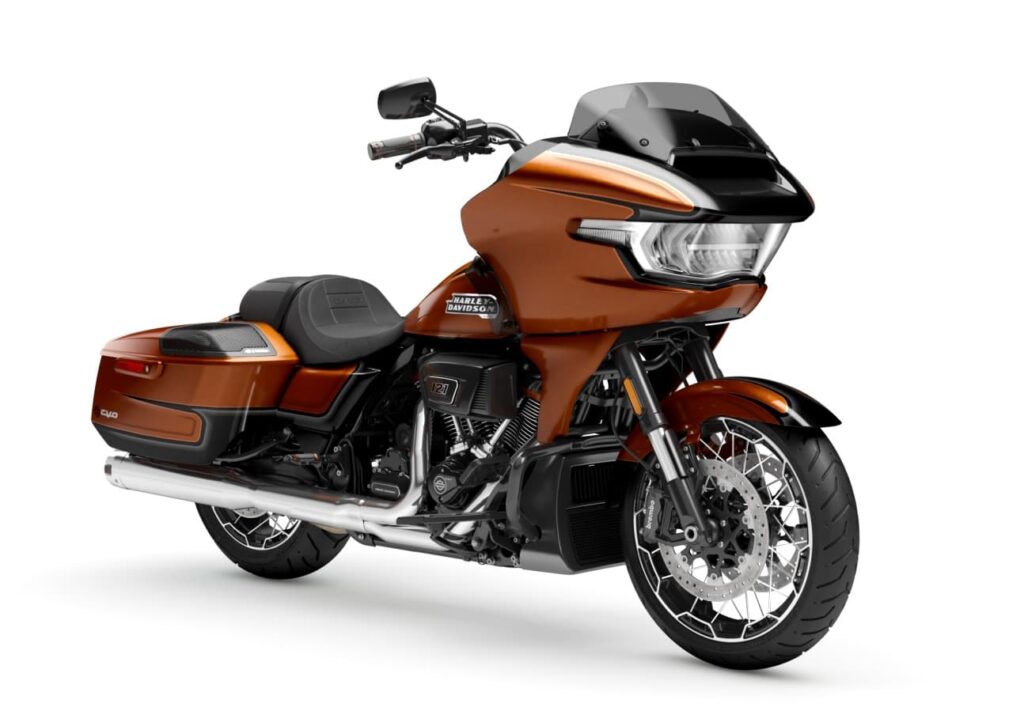
But what’s super interesting is that the 2023 CVO Road/Street Glide models have liquid cooling in the cylinder heads despite that not being in the name or spec sheet anywhere.
From 2024, Harley-Davidson has started trickling liquid cooling down to other Touring motorcycles – the 2024 Street Glide and Road Glide. These aren’t CVO models. But they most definitely have a liquid-cooled engine. Again, liquid cooling is just in the cylinder heads, not in the cylinders themselves.
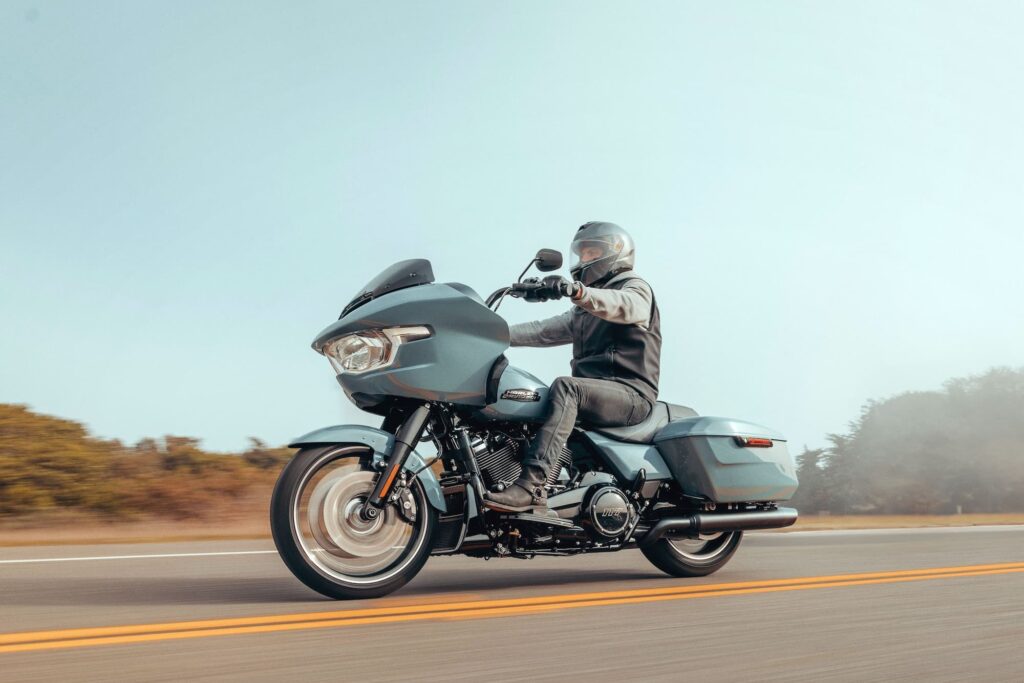
And again, Harley-Davidson makes no fanfare about it in the press releases. In the spec sheet from the press kit, it’s just described as a Milwaukee-Eight 117 motor. You have to dive down deeper into the sheet to find mention of liquid cooling (under “coolant capacity”).
On the official site, Harley-Davidson talks about the revised fairing, LED lighting, and other refinements, but mentions the liquid-cooled heads down below underperformance, emphasising that it’s a comfort feature.
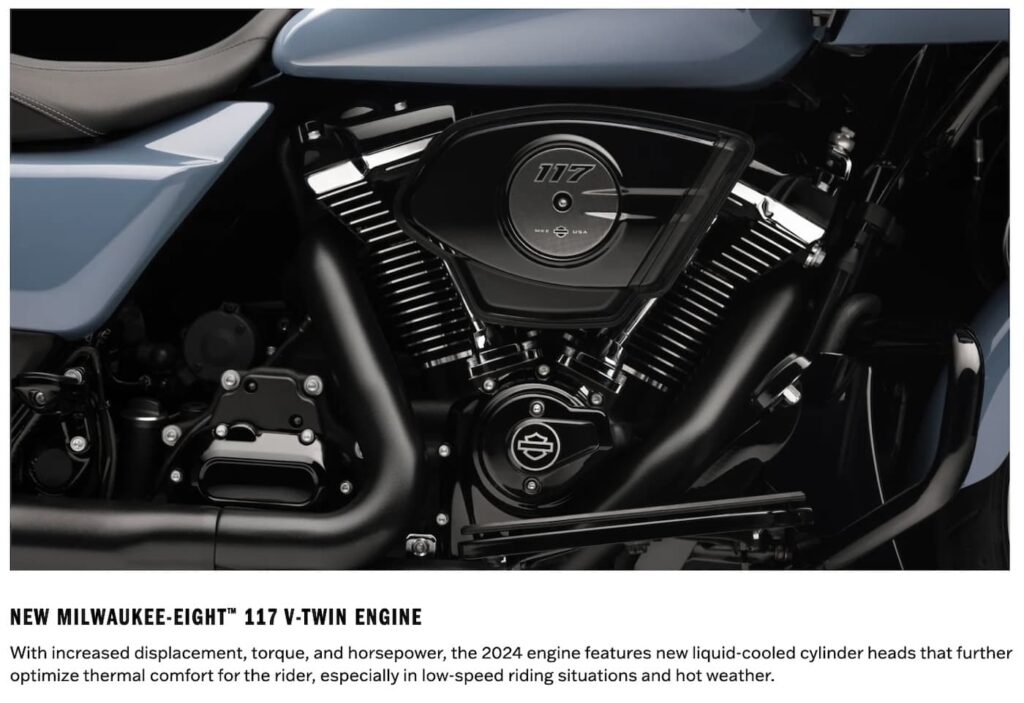
They don’t call this a “Twin-Cooled” motor. It’s just a “New” Milwaukee-Eight. So they’re not making a big deal out of the liquid cooling. Almost like they’re trying to hide it. “No big deal, folks; we’re just cooling the heads of an air-cooled engine. With what, you ask? Hey, look at this giant TFT display!”
One interesting evolution vs the explicitly twin-cooled bikes is that the Street Glide and Road Glide (starting with the 2023 CVO models) have a radiator behind the wheel, just like you’d see on most liquid-cooled motorcycles. This is different from the twin radiators on the Ultras and pre-2023 CVOs.
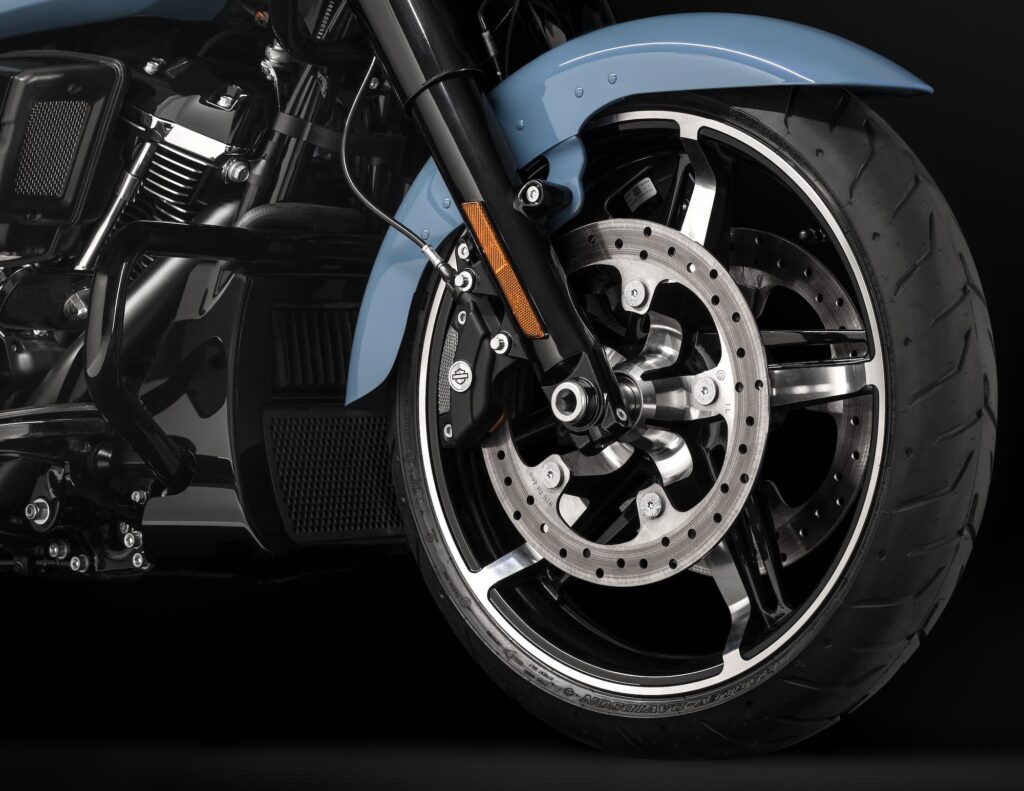
Parallels with the BMW R-Bikes Evolution (and Other Manufacturers)
What Harley-Davidson has been doing with liquid cooling has close parallels in the BMW world.
BMW has had liquid-cooled engines for a while in their K-bikes (which have four or six-cylinder engines). But BMW boxer twins were air-cooled for many decades before then. BMW riders know those bikes as “airheads”. (See here for a guide to airheads, oilheads, etc.)
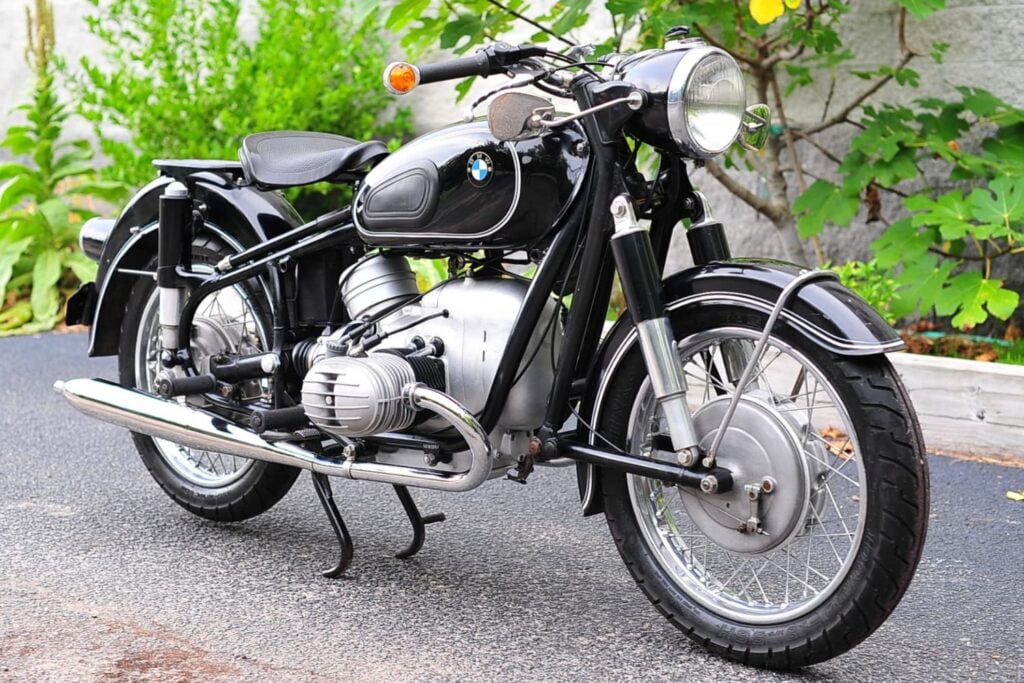
In the 1990s, BMW started using oil channels and an oil cooler to cool the engines. But in 2013, BMW introduced “strategic” liquid cooling — yes, liquid cooling, but no, not everywhere — yet.
Like Harley-Davidson’s early twin-cooled motors, the 2013 BMW R 1200 bikes had two radiators on the side — though in that case, it was so the Telelever suspension wouldn’t interfere with radiator position.
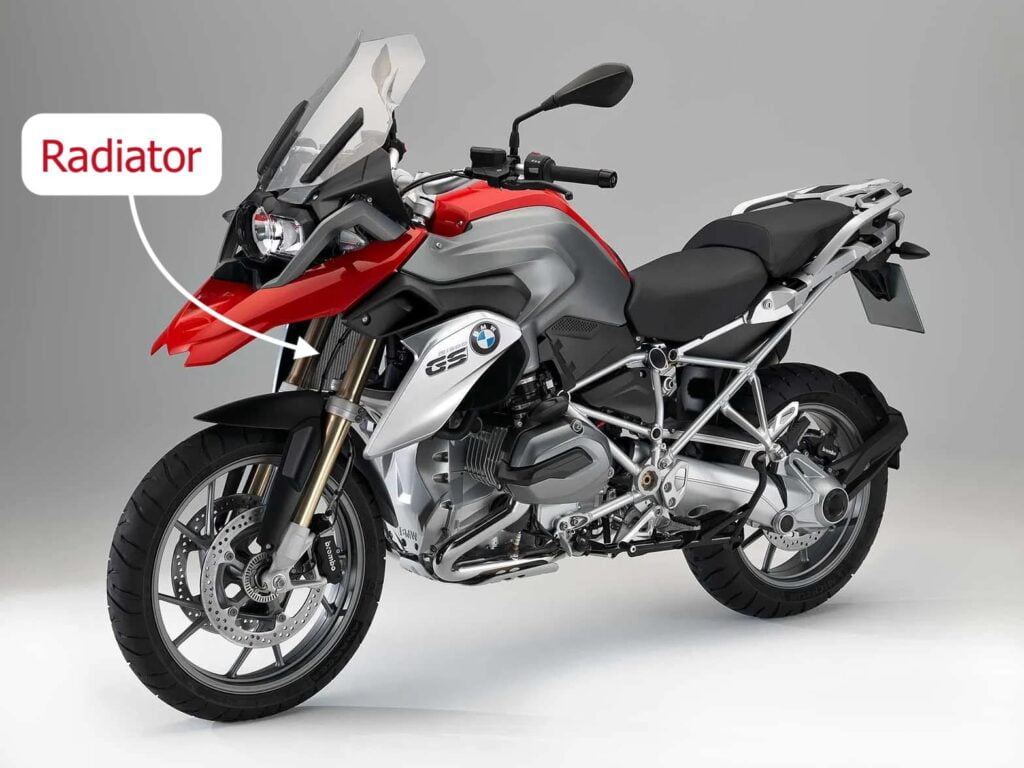
What happened next is interesting. People started noticing the benefits of liquid cooling — more power and longer valve service intervals (double) — and the without a penalty to weight. Yes, there’s more “complexity”, and more steps in regular service (checking fluid levels and occasionally replacing them), but sales of R bikes are as strong as they’ve ever been.
By the R 1250 generation, BMW just made the whole engine liquid cooled. Few batted an eyelid. The rest is history.
I’ll note differences with the Harley-Davidson’s introduction of liquid cooling. Firstly, it doesn’t come with a heap more power. And secondly, Harley-Davidson “Big Twins” have hydraulic self-adjusting lifters — so there’s no notable effect on valve service life.
More and more “traditional” manufacturers are adopting liquid cooling. Moto Guzzi did first with the V100 Mandello, though they didn’t sneak up on liquid cooling like Harley-Davidson and BMW did. Royal Enfield did with the 2024 Himalayan.
Ducati, like BMW, has had two lines of bikes — the air-cooled or air/oil-cooled everyday bikes (like the Monster, Sport Classic, early Multistradas, and Supersport), and the liquid-cooled superbikes.
But since the early 2010s, most Ducati lines have been liquid-cooled. The Multistrada 1200 was the first liquid-cooled Multistrada and the Monster 1200 and 821 were the first liquid-cooled Monsters. These days, the only air/oil-cooled Ducatis are explicitly heritage bikes — the Scramblers.
So, given how many other manufacturers have turned to liquid cooling, it’s not a huge surprise to see Harley-Davidson doing it — though it’s curious to see it coming to the Big Twins.
Where is Harley-Davidson Headed with Liquid Cooling
In short, I think Harley-Davidson is trying to sneak up on full liquid cooling. In the next few years, we’ll see more bikes — maybe CVO editions of the Road King or even premium bikes in the Softail line — get strategic liquid cooling in the cylinder heads. Then, strategic liquid cooling in the cylinder heads will expand to full liquid cooling over time and nobody will mind that much.
Motorcycles, responding to emissions laws around the world, are becoming quieter, smoother, safer, and less riotous in general.
On the other hand, gasoline-powered motorcycles won’t be around forever. In fifty years time, we’ll be hard-pressed to find them new, and in 100 years, they’ll mostly be collectibles and museum pieces, just as grandfather clocks and steamboats are now. Older riders already know of old tech (like two-strokes, purely air-cooled engines, and points ignition) that are no longer used.
So, what does this mean? I’m not a shill for Harley, nor a luddite who eschews progress. But I do appreciate the classic nature of simpler motorcycles, as long as they don’t come with too many compromises (like service requirements or fuel consumption).
If you’re after a modern Harley but want to avoid some of the latest tech like liquid cooling, TFT displays, or cornering ABS, then these might be the last years in which you can do so. And as for the Street and Road Glide — you’ll already have to go back a few years.

